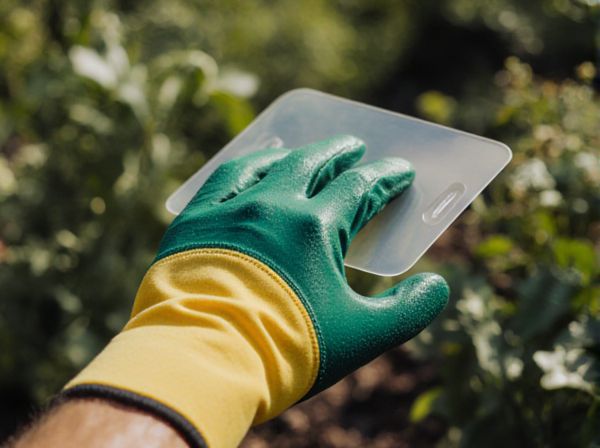
Polycarbonate vs Glass Illustration
Polycarbonate panels offer superior impact resistance and lightweight durability compared to traditional glass, making them ideal for greenhouses exposed to harsh weather conditions. Glass provides excellent clarity and UV resistance, enhancing light transmission for optimal plant growth, but is more fragile and heavier. Choosing between polycarbonate and glass depends on balancing durability, light quality, and budget considerations for effective greenhouse performance.
Table of Comparison
| Feature | Polycarbonate | Glass |
|---|---|---|
| Durability | High impact resistance, shatterproof | Fragile, prone to breaking |
| Weight | Lightweight, easy to install | Heavy, requires strong support |
| Light Transmission | Up to 90% UV light transmission | Up to 92% natural light transmission |
| Insulation | Better thermal insulation, reduces heat loss | Lower insulation, higher heat transfer |
| Cost | More affordable and cost-effective | Higher upfront cost |
| Maintenance | Resistant to weathering, easy cleaning | Prone to staining, requires regular cleaning |
| Lifespan | 10-20 years with UV coating | 20-30 years or more |
Introduction to Greenhouse Materials
Polycarbonate and glass are the primary materials used in greenhouse construction, each offering distinct benefits for plant growth environments. Polycarbonate panels provide superior impact resistance, lightweight durability, and better insulation, reducing energy costs by maintaining stable temperatures. Glass, known for its excellent light transmission and long lifespan, enhances photosynthesis but requires more structural support and is heavier, influencing the overall greenhouse design and cost.
Polycarbonate vs Glass: An Overview
Polycarbonate panels offer superior impact resistance and lighter weight compared to traditional glass in greenhouse construction. Their enhanced thermal insulation properties contribute to better energy efficiency and temperature regulation for plant growth. Despite a higher initial cost, polycarbonate's durability and UV protection make it a cost-effective choice over time relative to glass.
Light Transmission and Plant Growth
Polycarbonate panels transmit 80-90% of natural light, providing consistent diffusion that reduces hotspots and promotes uniform plant growth. Glass offers higher light transmission, typically around 90-92%, but can create glare and uneven light distribution, potentially stressing plants. The balanced light diffusion of polycarbonate enhances photosynthesis efficiency and supports healthier, more vigorous crops compared to traditional glass.
Insulation and Energy Efficiency
Polycarbonate panels offer superior insulation compared to glass due to their multi-wall structure, which traps air and reduces heat transfer, enhancing energy efficiency in greenhouses. Glass, while providing excellent light transmission, has higher thermal conductivity, leading to greater heat loss and increased energy consumption for temperature regulation. Using polycarbonate can significantly lower heating costs and maintain more stable internal temperatures, making it an optimal choice for energy-efficient greenhouse design.
Durability and Lifespan Comparison
Polycarbonate greenhouse panels offer superior impact resistance and can withstand extreme weather conditions without cracking, providing a lifespan of up to 10 years. Glass panels, while more susceptible to breakage and shattering, typically last 20 to 30 years with proper maintenance. The choice depends on balancing the higher durability and flexibility of polycarbonate against the longer lifespan and aesthetic appeal of glass.
Safety Considerations in Greenhouse Design
Polycarbonate panels offer superior impact resistance compared to glass, reducing the risk of breakage and injury in greenhouse environments. Unlike glass, polycarbonate is shatterproof, enhancing safety during storms or accidental impacts, making it ideal for structures exposed to harsh weather conditions. Glass, while providing excellent clarity, poses higher safety hazards due to its fragility and potential for sharp shards upon breakage.
Maintenance and Cleaning Requirements
Polycarbonate panels require minimal maintenance due to their impact resistance and self-cleaning properties, reducing the need for frequent washing. Glass surfaces demand regular cleaning to maintain clarity and may be prone to scratches and breakage, leading to higher upkeep costs. Polycarbonate's lightweight nature also facilitates easier handling during routine cleaning compared to fragile, heavier glass panes.
Cost Analysis: Initial and Long-Term
Polycarbonate panels typically offer a lower initial cost compared to glass, making them a budget-friendly option for greenhouse construction. Over the long term, polycarbonate's durability and impact resistance reduce maintenance and replacement expenses, while glass requires more frequent repairs and is prone to breakage. Despite its higher upfront cost, glass provides superior light transmission and longevity, potentially offsetting expenses through improved plant growth and a longer lifespan.
Aesthetics and Greenhouse Appearance
Polycarbonate panels offer a sleek, modern appearance with a uniform, translucent surface that diffuses light evenly, enhancing plant growth and creating a soft, natural ambiance inside the greenhouse. Glass provides a classic, transparent look that allows direct sunlight to penetrate, offering vibrant views of plants and a traditional greenhouse aesthetic favored for its clarity and elegance. Both materials impact the overall visual appeal, with polycarbonate delivering a contemporary, durable finish and glass maintaining a timeless, pristine appearance.
Choosing the Best Material for Your Greenhouse
Polycarbonate offers superior impact resistance and better insulation with a U-value between 1.4 to 1.7 W/m2K, making it ideal for energy-efficient greenhouses. Glass provides exceptional light transmission, averaging 90% clarity, which supports optimal plant growth but is more fragile and less insulating. Selecting between polycarbonate and glass depends on priorities like durability, thermal performance, and light requirements for your specific greenhouse environment.
Polycarbonate vs Glass Infographic

 gardendif.com
gardendif.com